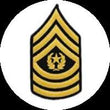Army Enlisted Rank
Junior Enlisted Ranks (E-1 through E-3) Non-Commissioned Officers (E-4 through E-6) and Senior Non-Commissioned Officers (E-7 through E-9) are the three categories of the Army's enlisted ranks.The promotion process for Junior Enlisted Ranks (E-1 through E-3) is largely automated; however, in order to progress to E-4, a prerequisite course must be completed and two years of service must pass. Private (E-1), Private 2nd Class (E-2), and Private First Class (E-3) are the ranks in this category.
Junior non-commissioned officers, or corporals (E-4), are classified as non-commissioned officers (E-4 through E-6). This group's ranks are Corporal (E-4), Sergeant (E-5), and Staff Sergeant (E-6).Senior Non-Commissioned Officers (E-7 through E-9) encompass Sergeant First Class (E-7), Master Sergeant/First Sergeant (E-8), and Sergeant Major (E-9). The latter category includes six distinct ranks, with roles ranging from Platoon Sergeant to the Sergeant Major of the Army. Notably, the Sergeant Major of the Army serves as the singular enlisted advisor to the Army Chief of Staff, selected for exceptional leadership, extensive experience, and effective communication throughout the chain of command.
Army Warrant Officer Rank
Within the Army, warrant officers fulfill a variety of roles. Junior warrant officers are generally assigned to various tactical positions throughout the Army, while their senior counterparts are assigned to higher echelons, including brigade and above. Additionally, warrant officers contribute their expertise to the Department of Defense, joint services, and other branches of the armed forces.
The Army's warrant officer corps is organized into five classes. Following a two-year period, an individual progresses from Warrant Officer One (WO1) to Chief Warrant Officer Two (CW2). In the aviation sector, competitive promotion to Chief Warrant Officer Three (CW3), Chief Warrant Officer Four (CW4), and Chief Warrant Officer Five (CW5) occurs at six-year intervals, while individuals in other branches in the Army experience a five-year gap between promotions.
Army Officer Rank
Officers in the U.S. Army bear the primary responsibility for decision-making, ensuring the well-being of the soldiers and service members under their command, and providing leadership to lower-ranking personnel. Aspiring officers must meet certain criteria, including a minimum age of 19, a bachelor's degree, and successful completion of a physical and medical examination. Individuals aspiring to become officers in the Army have several paths, such as enrolling in officer candidate school, joining the U.S. Military Academy, participating in an ROTC program, or pursuing a direct commission.
The Army's officer ranks are categorized into three levels: company grade, field grade, and general.Commissioned officers hold the highest ranks in the Army, with their appointments confirmed by the Senate and granted presidential commissions. Within this hierarchy, company grade officers range from O-1 to O-3, field grade officers occupy the ranks of O-4 to O-6, and general officers are positioned at O-7 and above.



























